Sailor Moon is More
When one say Sailor Moon, what do you think of? Sailor Moon is not just another shoujo. Sailor Moon is not just a magical girl anime. Sailor Moon is about a girl who becomes a princess whilst fighting demons and protecting the planet. Sailor Moon is an exploration of female power and friendship and the importance of healthy romantic and platonic love in our lives. Sailor Moon is more.
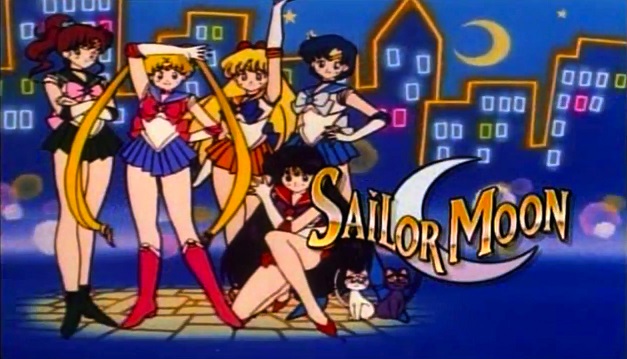
Usagi, Serena in the English dub, is not a female hero typical to the screen. She is not obsessed with grades, and does not have male companions to constantly berate about their grades like a child-mother. She’s lazy, not an overachiever–she’d rather be in the arcade or eating than studying or looking pretty. These characteristics of the female protagonist may seem small, but they are so important, especially for the time period. The tired trope of women knowing nothing about video games and only ever eating salad is not something we see in Sailor Moon. Usagi and her alter ego Sailor Moon is an individual, an individual not obsessed with being passively appealing or motherly to her male companions; although one of the show’s many failings is that Usagi and her pals stay extremely thin despite little exercise and a love of eating…at least they eat on screen. Ravenous hunger is a trait usually reserved for scrapping young boy heroes, and it instills the idea in girls that they shouldn’t be eating so much, which we all know can lead to serious health concerns in their teens. What’s more, you won’t see Usagi chiding boy heroes for eating too much or playing at the arcade like some perverted nagging wife/mother child figure. Sailor Moon’s entire team is made up of girls–diverse, capable, powerful girls who work together to explore their strengths and protect their family and community.
For instance, Haruka/Uranus and Michiru/Neptune, along with their friend Sestuna/Sailor Pluto, are the most powerful as well as oldest sailor scouts; they are also the most mature. The five main sailor scouts are childish and immature (when not in senshi form) however the three older scouts are brooding and complex women with separate and darker motives to their counterparts. Sailors Uranus and Neptune believe that sacrifice is necessary for survival, which causes friction between them and Sailor Moon. Hotaru/Sailor Saturn, the young but mature senshi of revolution believes that her life should be sacrificed for the princess (Sailor Moon) at all times. This diversity of philosophies among women is one of the most important aspects of the show. The sailor soldiers are also physically and personally diverse–Ami/Mercury is short and pale and obsessed with studying, Makoto/Sailor Jupiter is tall and tomboyish and scrappy, but is also interested in feminine traditions like home making. Uranus is very tall and has a “boys’” haircut, and loves traditionally masculine sports without losing her feminine identity. All 9 of the girls are physically and mentally diverse and I cannot stress enough how important it is for girls to see themselves as more than one thing. If women are not portrayed as three dimensional, diverse people in the media girls will find it hard to develop the confidence to live their own lives. Men, are, of course, central figures too, like villainous Doctor Tomoe and heroic Tuxedo Mask/Mamaru.
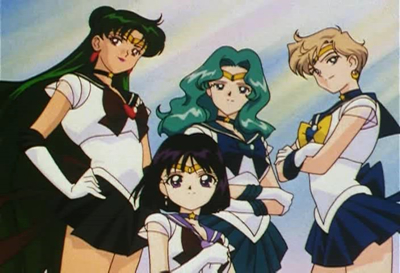
Tuxedo Mask, alter ego of Usagi’s boyfriend Mamaru, is one of the few male heroes in the series, and he is not presented as rough and tough man who saves the day for the less powerful girls. In fact, he is equally as strong as each sailor scout, Sailor Moon rescues him on many an occasion, and he does not react poorly–even jokingly– like he has been emasculated or embarrassed by having been rescued by a girl. Tuxedo mask is a romantic, and whilst he serves primarily as Sailor Moon’s love, he is still a well rounded and in depth character and thus we do not fall into the pit of reversed gender roles–which do nothing but serve to enforce them further. Tuxedo mask is not an exemplary partner for his actions in Sailor Moon R when he chose not to disclose his visions to Usagi and shut her off emotionally (which was not in the manga) however, he servers as actual support for Sailor Moon and not just as a plot device to cause her pain. Mamaru respects Usagi and her decisions and does not start pride-based, irrational fights nor is he shown as dominant over his girlfriend Usagi, who has her own agenda which does not revolve around but heavily requires her love life.
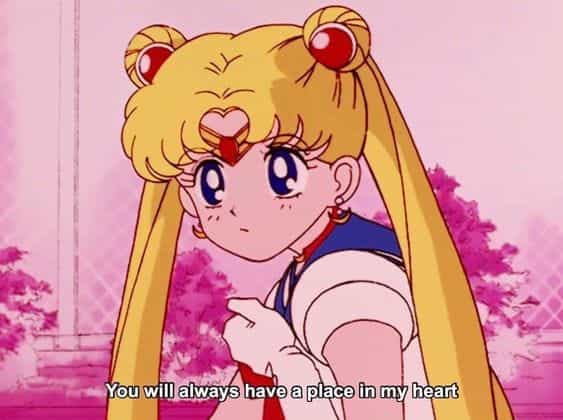
Tuxedo Mask is only one of many love interests in the series. Unfortunately, the trope of women drooling over men fanatically is something we see presented in Sailor Moon. Their sexuality, however, does not reduce them to blubbering fools, at the mercy of men. When it comes down to it, the sailor scouts are heroes and nothing–not even boys, stops them from protecting their friends and fighting evil. Female relationships are an integral part of Sailor Moon and the ways in which they are presented are refreshingly healthy and diverse, and certainly pass the Bechdel test, There are 9 sailor scouts in total and they each have diverse relationships with each other and with other characters.
The most complex relationship in the show is that between Usagi and her 12 year old daughter from the future, Chibiusa. The original 90s series does not handle this relationship very well, actually, I will admit. Because they interact like sisters as Usagi has not given birth to Chibiusa yet, they act like competitive sisters, and the object of their desire is usually Usagi’s boyfriend/Tuxedo mask. However! There are critical moments in the anime that reflect Sailor Moon’s undying motherly love for her daughter. Motherhood is celebrated in Sailor Moon, and mothers are shown as powerful and important, I.E. Neo Queen Serenity (Chibiusa’s mom, future Usagi) being the most powerful character in the second season. The senshi also have diverse relationships with each other. Sailor Moon is a friend to all, of course, though she has friction with Sailor Mars. Older senshi Uranus is protective of Sailor Moon, but thinks she is naive. Pluto is very fond of Chibiusa because she was her first friend. Sailor Moon is also watched over by her cat, a magical guardian sent to protect her by her mother. The matronly relationship between Luna the cat and Usagi important because it shows children a smart, independent, yet still caring and motherly figure and how she interacts in a healthy manner with the younger Sailor Moon. Luna is in a relationship with Sailor Venus’ cat Artemis, and they are always portrayed as loving and respectful of each other–in high contrast to the tired, nagging married couple unfortunately still prevalent in most series. One of the most important relationships in Sailor Moon is the love between Sailor Neptune and Sailor Uranus, the older senshi.
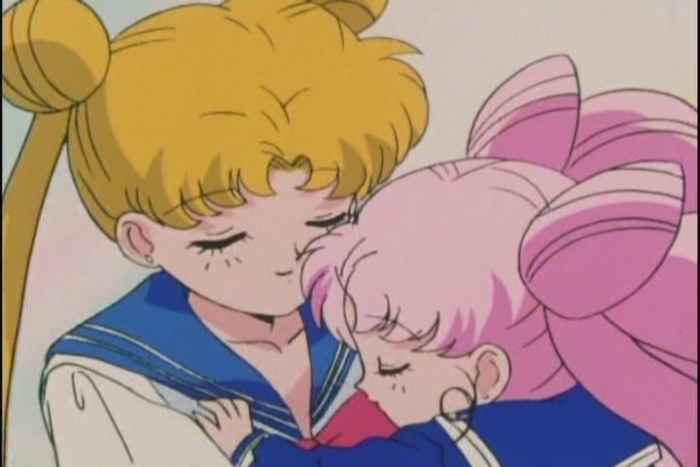
The term “Bury Your Gays” is regrettably well known today in 2018. What it entails is that, in most media, gay people simply aren’t allowed to be happy. Even in so-called progressive cinema, LGBT characters often end up dead or apart and depressed. This is not something that happens in Sailor Moon. Neptune and Uranus are girlfriends in the manga and japanese anime, though they were censored as cousins in American versions. Although they sometimes disagree on their quest direction, Neptune and Uranus have a thriving, long lived healthy relationship which continues happily in the end just like everyone else’s. it was 1992. 25 years later, mainstream television still perpetuates “Bury Your Gays” and still won’t allow openly gay characters in youth media. Sailor Moon is not afraid to show the love between two women, with such scenes as the end of Sailor Moon S when they find the talismans, and when they are struck down by Galaxia in Sailor Moon Stars.
When it comes to issues of the LGBT community, Sailor Moon does not shy away. Sailor Moon is a show primarily about the power and support of women. So, then, it must also be for the empowerment of LGBT communities. In the original Manga and in Sailor Moon Crystal, it is explained that Uranus has the power of both genders; in the 90s anime, which we are focused on, she is portrayed as a woman who is not afraid to embrace traditionally masculine norms and transform what gender meant to her. Interestingly, in Sailor Moon Stars three new characters are introduced, who are heavily implied to be gender fluid. Seiya/Starfighter, Taiki/Starmaker, Yaten/starhealer Whilst in the manga they were explicitly cis women in men’s clothing, in the 90s anime they are male until they transform into senshi and become female; all the other senshi respect their pronouns when they are men and when they are women. This opens up the viewer to questions they might not have thought of before, especially at the time that the anime originally ran: what does it mean to be a woman, what is the difference between a man and a woman, and who else is there? The other sailor senshi never mock the starlights and they respect them because they are all senshi. However, there is one rather distasteful trope on display in the anime in the depiction of Sailor Uranus/Haruka and Sailor Starfighter/Seiya; Seiya, who is sometimes female and in love with a woman, fills out the role of the lesbian rival. Sailor Uranus, a lesbian, instantly hates and distrusts Seiya, reinforcing the outdated ideas that butch lesbians don’t get along and lesbians are aggressive. Whilst this is concerning, the love that Seiya has for Usagi is never portrayed as predatory; it is akin less to the phantom of the opera and more to the classical Pierrot, a tragic pining figure. Seiya is a well rounded character who is insinuated to have been in love with his princess, Kakyuu. Sailor Starfighter falls in love with her friend Usagi, whilst Mamaru is gone. The friendship between Usagi and Seiya/Starfighter seems to have been a mutual bandaid for their heartbreak after losing their true loves (Tuxedo Max, Kakyuu), and whether or not Usagi would have returned her friend’s feelings if she was not waiting for Mamru is left unexplained. In Sailor Moon S, Sailor Moon seems to be infatuated with Haruka.
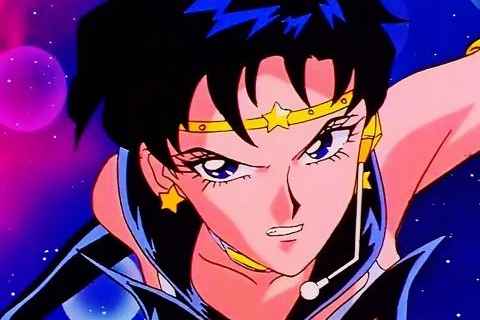
Sailor Moon is more than pretty transformations and catchy slogans. Sailor Moon is a story written by a woman about women and girls supporting and loving and respecting themselves and each other. Sailor Moon is the story of a beautiful healthy love between Usagi and Mamaru, her prince who respects and cares for her. Sailor Moon is an anime with a diverse female cast who have conflicting goals and personalities; it is an exploration of a healthy female community build on trust and friendship. It presents ideas about gender and sexuality that were revolutionary to the world of anime. It is also flawed because it sets unrealistic body standards for teen girls and depicts tired tropes of lesbian women. Sailor Moon is more than what you think.
What do you think? Leave a comment.




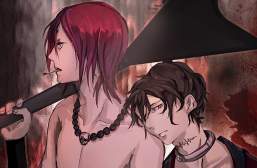
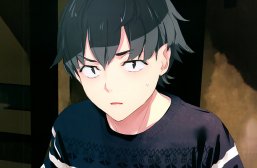

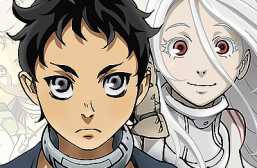
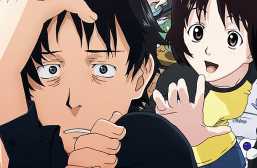
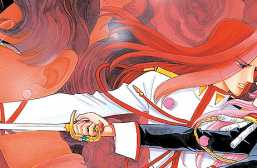
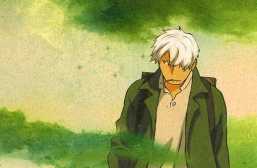
I loved Sailor Moon as a kid, it came out on TV when I was 4 or 5, one of my birthday cakes was Sailor Moon and I had the wand and all the attacks memorized, it was great. I’m not a huge fan of the new series though.
Good piece. It’s important to let girls know they have a choice not to participate in traditionally Feminine things /if/ they do not want to… But we need to be careful not to lose ourselves in that message and forget to remind them that if they /do/ want to, then that’s equally as ok. Saying that we need to make anything which has traditionally and even stereotypically feminine things in it (like sailor Moon) and make them more focused on telling girls that /not/ being girly is acceptable, is crossing into the realm of taking that message too far… It /is/ equally important that girls hear the reverse, as well, and if we continue doing what you suggest, then they will never hear that message.
Hmmm I could have sworn I mentioned the value of femininity in here but I suppose I’m getting it mixed up with the piece I wrote on Utena around the same time period. Anyway, I agree that women and girls should embrace femininity if they so choose; however, the insinuation that praising Sailor Moon for its gender boundary breaking is suggesting an attack on the promotion of feminine empowerment in such media would be incorrect. In fact I don’t recall ever saying that Sailor Moon should be about not being girly. Unless, of course, you mean my rebuke of traditional gender /roles/ in anime; Sailor Moon saving Tuxedo Mask, playing video games, and eating freely is not Sailor Moon choosing to be unfeminine; it is discarding the repressive expectations of women and girls.
I’m planning to be working on my own manga version of Sailor Moon.
My daughter eats, breathes and shits Sailor Moon. Halloween cosplay costume, manga’s, anime, the Bandai figures, etc, etc. You name it, she either has it or wants it. I think a live action Sailor Moon show (think Power Rangers) would be an instant hit if done properly.
I seem to remember them doing one in Japan that got decent ratings.
Not sure if you knew this already, but there actually was a Japanese live action show called Pretty Guardian Sailor Moon from the early 2000s. If your daughter is old enough to tolerate subtitles, I bet she would really love it.
There is a Japanese live action series called Pretty Guardian Sailor Moon and it’s actually really, really good. It follows the manga a lot closer than the original anime, and tension between Venus and Mars is really well done.
And if she ever makes it to Japan.. there are cafes and theatre shows all the time.
Almost all of this is on Youtube too!
So you’re saying that in a few years she’ll be just like the young woman I saw yesterday with a fairly large (and well done!) Sailor Moon tattoo on her arm? It’s good to be prepared for these things as a parent!
I pity you.
I’m not really a fan of Sailor Moon, but my wife is, and it’s definitely nostalgic for being part of the first wave of anime to hit the mainstream along with Ronin Warriors and Robotech.
I remember that first brief early 90s wave— Ronin Warriors, lol! And Speed Racer, and Sailor Moon, and Pokemon was already here. I was just out of college, and was miffed that “Oh, NOW they’re bringing anime to America, so kids don’t have to beg/borrow/bribe/steal/airlift dubbed VHS tapes directly out of Japan to get some anime, or have to go to parties with creepy guys who show tentacle-porn just because they’re the only people on campus who could get any anime besides you?? What took you so long??” ^.^ Little did I know that in 15 years’ time you’d be able to get this shit in Barnes & Noble, and in 30 years’ time you’d be able to get anything on Amazon delivered to your home for free.
Those five hours to download a shitty sub of Evangelion off Limewire, those were the days.
This was my life in middle and high school. That and buying every piece of merch that was available. This was the time where you could literally own everything available because there was only a single shelf of it in the store that covered every anime or manga available.
Small side-note that’s possibly of interest only to me: anime took root in France much earlier than in America for some reason, and so I grew up watching Grendizer (a.k.a. “Goldorak”) and Gatchaman (a.k.a. “Bataille Des Planetes”) in early 80s Quebec (Gatchman apparently also aired in the US in 1980, but the French version dates back to 1972 & didn’t edit out the sex & violence?). Anyways, it was always weird to me when the non-French kids “discovered” anime with Robotech, cause as far as I knew it had *always* been around.
Anime AND manga were always much more popular in France and much of Europe. One reason I’ve read is because the States already had their TV animation, but much of Europe couldn’t afford to create much of their own so were keen to import Japanese titles. Another is of course that in France and Italy, etc, it’s always been slightly more acceptable to have more mature comics—not just superhero stuff, so they have a similar background.
EVen now, you can find a lot of great French translated manga of titles that the American market would *still* never touch.
I watched a lot of OLD anime from the Quebec stations—we’re talking things like the 1970s classic The Rose of Versailles (Lady Oscar in French), the early Miyazaki and Takahata tv adaptation of Anne of Green Gables, Grendizer of course, Albator (an adaptation of Captain Harlock) was a phenomenon in France, etc, etc etc…
I’m a huge Sailor Moon fan, it was my first exposure to anime. I still find it enjoyable even now. For all of the cliches, lazy storytelling, and uneven characterization, the show still has a really impeccable sense of humor.
I got to talk to one of my female friends who was into Sailor Moon back in the day. I think the reason why so many girls connected with this show was because there wasn’t anything like it at the time when it hit. Remember, this show predates a lot of the female-fronted action shows like Buffy and Charmed that were popular in the late 90s and early 00s and, by extension, can be seen as their progenitor.
Yes, there were TV series about female leads and female superheroes, but Sailor Moon was the first show that mixed both of these together and made the girls front and centre to the action instead of being part of a team mostly led by males like the X-Men or, like a lot of other anime, was based on old children’s books like Alps no Shoujo Heidi. This series however was a) about a team of (mostly) just superheroines and b) was set in the “then” i.e. the 1990s.
Is it the best anime ever made? No. Is it the best TV series ever made? Oh, god no. Is the source material good? Bugger, NO! But, at the time, this was lightning in a bottle and it kicked off the idea that girls also like superheroes if they can relate to them.
I was always annoyed how Usgai tried to “save” every enemy. This is not how it works.
The same goes to whining over her friends. But I have to say that this is what made me crying even more. Just thinking about the first Season ending.
I love my nostalgie goggles haha
Love the read. Im a fan and I take a great interest in Japanese culture.
Great article. I’ve heard mixed things about the new series, but I’m greatly enjoying the original. I just got past the introduction of Sailor Mercury which is an episode I remembered very fondly from my childhood. As it started I had a major Ah Ha! moment. “Right, the computer tries to brainwash her…”
Sailor Moon was probably my first anime, and though I quickly transitioned into DBZ and the other standard “boy” stuff, I still credit Sailor Moon as what sparked it all for me.
I remember watching this back in the 90’s
The remake is actually a lot better.
I love this anime!!
Shame how the actual anime was treated in the west. Back in the dark times of butchering anime for local audiences…
I feel like working with a Japanese companies in the 80s and early 90s was like the Wild West, no rules, nothing.
I remember watching the anime growing up along wtih DBZ.
Indeed it is more. Thanks for sharing your discussion.
Sailor Moon is a classic and I grew up with it too.
I agree with this compliantly
I agree with this post compliantly
This hits close to home for me
I remember prior to Sailor Moon, a very popular shojo series in Europe and America was Candy Candy and main character had also tomboyish traits. Raised at an orphanage she also faced discrimination by two rich kids while working as a maid, yet many times would not tolerate abuse. I think the romance part was executed better there since it was an early 20th century drama taking place also during the Great War.
As for girls meddling into boys affairs, there was also the dubbed series Hai Step Jun, about a young inventor girl enrolling in a college and being made fun off by older students. There she meets a guy who is interested in motorcycles, yet is much older than the others, having remained behind in his courses. Both find something common in their interests.
But those series and others like Lalabel and Minky Momo did not retain their popularity in the newer generations who grew with Sailor Moon and CCS.
I’m planning to be working on my own manga version of Sailor Moon.
I love that you discuss the importance of diversity among the relationships in this anime. I was just watching the reboot, Sailor Moon Crystal, the other day and I was thinking that it was interesting that the main reason Usagi approaches or takes an interest in the main cast is that she finds herself attracted to them in some way – thinking that Ami was pretty when she smiled, being struck by Mako’s beauty and the smell of her perfume after being physically close to her, and thinking that Rei was the most beautiful girl she had ever seen. In fact, it’s the only reason why Usagi gets on the bus with Ami – Ami told Usagi that there was a beautiful girl from another school that rode the bus frequently. Usagi even drooled and had heart eyes over Rei.
I’m not trying to suggest anything about Usagi’s sexuality, but I will say that I have a newfound appreciation for the way these girl’s relationships are portrayed in this show. And on a more personal level, I’m glad that Sailor Moon was the very first anime I ever got into because it’s relationships like these that made me fall in love with anime and storytelling, and has guided the kind of close relationships I’ve built in real life.
I think it’s complexity is a reason that it’s so popular!
When will the show come back out in English dub…
Such a trip down memory lane. Sailor Moon really is more.